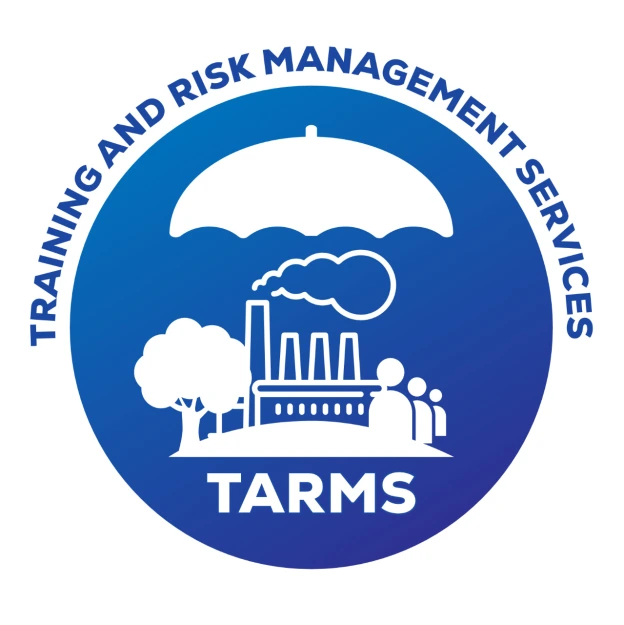
Introduction to Heat Stress
Heat stress is a critical environmental hazard that poses significant risks to both human health and productivity. It occurs when the body is unable to dissipate excess heat, leading to a rise in core temperature. This imbalance can result from high ambient temperatures, humidity, physical exertion, and inadequate hydration. Understanding heat stress is essential for safeguarding individuals in various settings, including workplaces, sports, and daily life, particularly as global temperatures continue to rise due to climate change.
Heat stress can manifest in several ways, ranging from mild symptoms like discomfort and sweating to severe conditions such as heat exhaustion and heat stroke. Heat exhaustion is characterized by symptoms such as heavy sweating, weakness, dizziness, nausea, and a rapid pulse. If left untreated, it can progress to heat stroke, a life-threatening condition where the body’s temperature regulation fails, leading to confusion, loss of consciousness, and organ failure.
Several factors influence an individual’s susceptibility to heat stress. Age, fitness level, medical conditions, and acclimatization all play crucial roles. Children, the elderly, and individuals with chronic illnesses are particularly vulnerable. Additionally, certain medications and alcohol can impair the body’s ability to regulate temperature.
In occupational settings, heat stress is a significant concern for workers in industries such as construction, agriculture, and manufacturing, where exposure to high temperatures is common. Employers must implement comprehensive heat stress management programs, which include measures such as providing adequate hydration, rest breaks, shaded areas, and educating workers on recognizing early signs of heat-related illnesses.
Preventing heat stress requires a multifaceted approach. On an individual level, staying hydrated, wearing appropriate clothing, and gradually acclimating to high temperatures are essential strategies. On a broader scale, urban planning that includes green spaces, improved ventilation, and heat-reflective materials can help mitigate the effects of heat in densely populated areas.
Research continues to evolve, providing deeper insights into the physiological mechanisms of heat stress and developing innovative solutions to combat its effects. With climate change expected to increase the frequency and intensity of heatwaves, it is imperative to enhance public awareness and preparedness to reduce the adverse impacts of heat stress on health and well-being.
Heat stress is a pervasive issue with far-reaching implications. By understanding its causes, effects, and prevention strategies, individuals and organizations can take proactive steps to protect themselves and others from the dangers associated with excessive heat exposure
Health and Other Hazards of Heat Stress
Heat stress poses a multitude of hazards, impacting health, safety, productivity, and the environment. Understanding these risks is crucial for implementing effective prevention and management strategies.
Health Hazards
- Heat Rash: Prolonged exposure to hot and humid conditions can cause heat rash, characterized by red clusters of small blisters. While often minor, it can be uncomfortable and may lead to more serious skin infections if not managed properly.
- Heat Cramps: These painful muscle spasms, usually in the abdomen, arms, or legs, result from dehydration and loss of electrolytes through sweating. They can disrupt normal activities and signal the onset of more severe heat-related issues.
- Heat Exhaustion: A more serious condition than heat cramps, heat exhaustion occurs when the body loses excessive water and salt. Symptoms include heavy sweating, weakness, dizziness, nausea, headache, and elevated heart rate. If untreated, it can progress to heat stroke.
- Heat Stroke: The most severe form of heat stress, heat stroke is a medical emergency that occurs when the body’s temperature regulation system fails. Symptoms include confusion, altered mental status, loss of consciousness, and a body temperature exceeding 104°F (40°C). Without immediate intervention, heat stroke can lead to organ failure and death.
- Dehydration: Heat stress often leads to significant fluid loss, resulting in dehydration. Symptoms include dry mouth, extreme thirst, dark urine, dizziness, and confusion. Chronic dehydration can have long-term health consequences.
- Exacerbation of Chronic Conditions: Heat stress can worsen pre-existing conditions such as cardiovascular disease, respiratory disorders, and diabetes. The strain on the body to cool itself can lead to increased heart rates and respiratory distress.
Occupational Hazards
- Reduced Productivity: Workers experiencing heat stress may exhibit decreased concentration, slower reaction times, and impaired decision-making, leading to reduced productivity and increased errors.
- Increased Accident Risk: Heat stress can impair cognitive and motor functions, heightening the risk of workplace accidents. Fatigued and overheated workers are more prone to mishandling equipment or making judgment errors.
- Absenteeism and Health Costs: Frequent heat-related illnesses can lead to higher absenteeism rates and increased healthcare costs for both employees and employers. This can strain organizational resources and affect overall business operations.
Environmental Hazards
- Wildfires: High temperatures and prolonged heat waves increase the risk of wildfires, which can devastate ecosystems, homes, and communities. The resulting air pollution also poses serious health risks.
- Infrastructure Damage: Extreme heat can cause physical damage to infrastructure, such as roadways, rail lines, and buildings. Thermal expansion can lead to pavement buckling, rail track warping, and structural stress.
- Water Shortages: Increased temperatures elevate the demand for water, leading to potential shortages. This can affect agricultural productivity, drinking water supply, and industrial operations.
Social and Economic Hazards
- Vulnerable Populations: The elderly, children, outdoor workers, and low-income communities are particularly susceptible to the impacts of heat stress. Lack of access to cooling solutions and healthcare exacerbates their vulnerability.
- Economic Losses: Heat stress can lead to substantial economic losses through decreased labor productivity, increased healthcare costs, and damage to infrastructure and agriculture. This can strain public resources and impact economic stability.
- Climate Change Feedback: Heat stress contributes to a feedback loop in climate change. Increased energy consumption for cooling, such as air conditioning, can lead to higher greenhouse gas emissions, further exacerbating global warming and its associated impacts.
Preventive and Mitigating Measures for Heat Stress
Effective prevention and mitigation of heat stress require a comprehensive approach that encompasses individual actions, workplace strategies, and community-wide interventions. Here are key measures to prevent and manage heat stress:
Individual Measures
- Hydration:
- Drink Plenty of Water: Regularly consume water throughout the day, even if you are not thirsty. Avoid beverages that can dehydrate you, such as alcohol and caffeine.
- Electrolyte Replacement: For prolonged activities in hot conditions, consider drinks that replenish electrolytes lost through sweating.
- Clothing:
- Wear Appropriate Clothing: Choose lightweight, loose-fitting, light-colored clothing made of breathable fabrics like cotton. This helps facilitate sweat evaporation and body cooling.
- Use Sun Protection: Wear a wide-brimmed hat, sunglasses, and apply sunscreen with a high SPF to protect against sunburn, which can impair the body’s ability to cool itself.
- Acclimatization:
- Gradual Exposure: Gradually increase exposure to hot environments to allow your body to adapt. This process, known as acclimatization, improves your body’s efficiency in cooling itself.
- Activity Modification:
- Limit Intense Activity: Reduce physical activity during the hottest parts of the day, typically between 10 a.m. and 4 p.m. Schedule strenuous tasks for cooler times of the day.
- Take Breaks: Incorporate frequent rest breaks in shaded or air-conditioned areas to allow the body to cool down.
- Monitoring and Awareness:
- Monitor Symptoms: Be vigilant for signs of heat stress, such as excessive sweating, dizziness, headache, and nausea. Take immediate action if symptoms appear.
- Buddy System: Pair up with a colleague or friend to monitor each other for symptoms of heat stress, especially during outdoor activities or work.
Workplace Measures
- Environmental Controls:
- Ventilation: Ensure adequate ventilation in indoor work environments to facilitate air circulation and cooling.
- Air Conditioning: Use air conditioning to maintain a comfortable and safe temperature in indoor workspaces.
- Shade Provision: Provide shaded areas or canopies for outdoor workers to take breaks and cool down.
- Work Scheduling:
- Shift Work: Schedule heavy work during the cooler parts of the day, such as early morning or late afternoon.
- Rotating Duties: Rotate job assignments to minimize prolonged exposure to heat for individual workers.
- Hydration and Rest:
- Hydration Stations: Provide accessible water stations and encourage regular hydration breaks.
- Rest Breaks: Mandate frequent rest breaks in shaded or cool areas to prevent heat build-up.
- Training and Education:
- Heat Stress Training: Educate employees about the risks of heat stress, recognition of symptoms, and appropriate first-aid measures.
- Emergency Procedures: Develop and communicate clear procedures for responding to heat-related emergencies, including providing immediate medical assistance.
Community and Infrastructure Measures
- Urban Planning:
- Green Spaces: Increase green spaces, parks, and tree canopies in urban areas to reduce ambient temperatures and provide cooling effects.
- Reflective Materials: Use reflective or light-colored materials for buildings and roads to reduce heat absorption.
- Public Facilities:
- Cooling Centers: Establish public cooling centers where residents can seek refuge during heatwaves, especially vulnerable populations like the elderly and low-income individuals.
- Water Fountains: Install public water fountains in parks and high-traffic areas to ensure easy access to drinking water.
- Public Awareness Campaigns:
- Heat Alerts: Implement public alert systems to warn about upcoming heatwaves and provide guidance on protective measures.
- Community Outreach: Engage in community outreach programs to educate the public about heat stress prevention and available resources.
- Policy and Regulation:
- Regulations: Enforce regulations that limit outdoor work during extreme heat conditions and mandate protective measures for workers.
- Climate Action Plans: Integrate heat stress mitigation into broader climate action plans to address the root causes of rising temperatures and improve community resilience.
Preventing and mitigating heat stress requires a coordinated effort across individual actions, workplace practices, and community planning. By implementing these measures, we can significantly reduce the risks associated with heat stress and protect public health, safety, and well-being.
Nutshell
Heat stress is a multifaceted hazard with extensive implications for health, safety, productivity, and the environment. Comprehensive strategies, including public awareness, workplace safety measures, and sustainable urban planning, are essential to mitigate the risks associated with heat stress and protect vulnerable populations.

